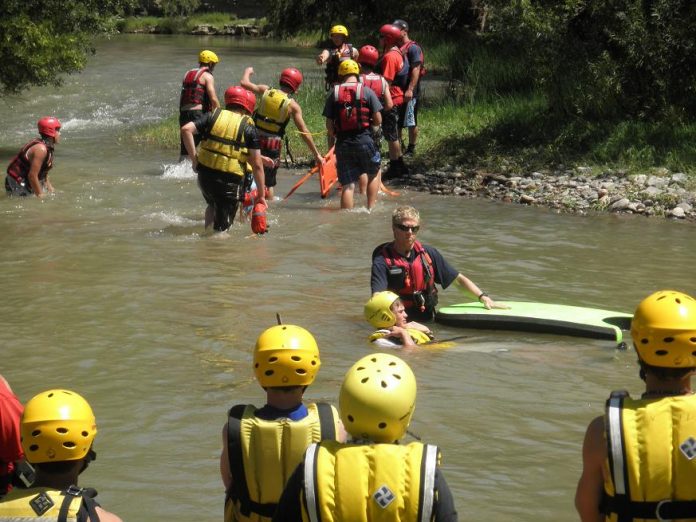The sun was brutal Aug. 24, and the teenagers taking a quick break for lunch couldn’t wait to get back in the water.
There was some laughter, but these kids were jumping into the Verde River at Beasley Flats for a very serious purpose.
They are students at Camp Verde High School enrolled in the popular fire science class taught by Steve Darby. While they weren’t learning about how to put out flames last week, they were learning how to one day save a life.
It was swift-water rescue training, and the few dozen students got a taste of how to work together to get someone out of a rushing river safely.
“This is the third year we’ve come out to the water,” Darby said. “It’s a big event for the students.”
The first year the water was higher, Darby said, and last year the class went to a water crossing near Cornville, but Beasley Flats, down river and about 10 miles south of Camp Verde, provided an excellent training ground.
The fact that the cool water provided a welcome respite from the heat certainly didn’t hurt either.
Darby was joined by Camp Verde firefighters Jake Cecil, Jake Fitzgerald and Clint Gillespie along with reserve firefighter Coby Cook to help teach the kids the finer points of water rescue.
These are skills that can be invaluable when they are needed, Cecil said. Every year, especially when the snow melt starts to reach the area, firefighters are typically called out to perform swift-water rescues. The stakes are higher in real-life, of course, but it’s training like this that is essential if any of these students are ever called upon to save someone trapped in the water.
The students learned how to join together in a wedge formation against the current, a shape Darby said provides a natural stability for people in the water.
They also learned how to stand upriver from a rescue sight to provide a lookout for any hazards that may be making their way downstream, and they learned how to get someone in the water stabilized on a rigid back board to assist with a rescue.
Students spent some time learning how to link up in a daisy chain to get safely out into the middle of a rushing stream and ideally, rescue someone in need.
They were also trained in the use of throw bags, flotation aids attached to a rope that can be thrown downstream and grabbed by someone at the mercy of the current — invaluable tools that can make all the difference at the right moment.
“It’s a commonly used method,” Darby said.
Darby said the class will be moving on to learn amount another important survival skill, the application of first-aid in the wilderness. Part of the idea is to teach the students how to use what’s available around them, because they might not always have access to first-rate medical supplies when there’s an emergency in the middle of nowhere.
The fire science class has a number of different training scenarios to teach a wide variety of skills applicable to various situations that may arise, including how to find people trapped inside a simulated smoke-filled room and other essentials of firefighting.



